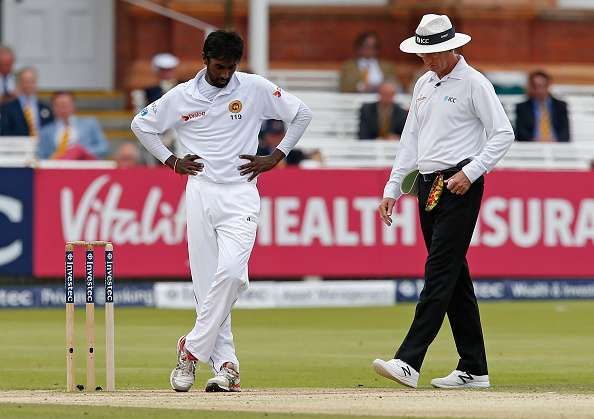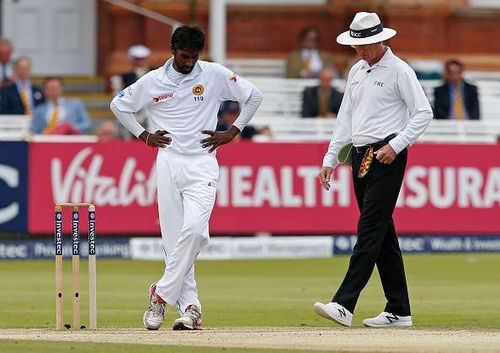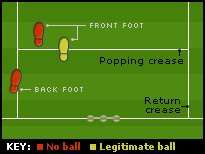
The return crease and the back foot - no ball rule explained
The potency of Curtly Ambrose is a legend of yesteryears. His intimidating run-up and menacing pace constituted tales that bowlers of future generations grew up listening to. That this mighty West Indian would make a mockery of himself in an international match is an object of incredulity, more so when it involved erring on the bowler’s part on repeated occasions.
Yet, one of the modestly popular cricket videos on YouTube shows Ambrose doing precisely that. At least that’s what it may appear, for the uninitiated.
After having delivered two no balls from over the wicket, Ambrose changed his direction and decided to go round the stumps. He charged in, went perilously close to the return crease, but managed to hurl down a legitimate delivery. Next ball, he went wider of the crease and the back foot landed well outside the return crease, thereby prompting the umpire to call a no ball.
Arrogant and willful, Ambrose might have simply aimed to make a point about the infamous Western Australia surface, but the no balls, intentional or otherwise, ended up adding no less than 9 deliveries to his over.
While much has been debated and argued about the front foot no ball – umpire Richard Illingworth’s error in the Wellington Test earlier this year being a case in point – little has been written over the decades about the back-foot rule in association with the return crease.
What is a back foot no ball?
In order to comprehend the back foot rule, one must understand what the return crease is. Law 9 states that, “The return creases, which are the inside edges of the crease markings, shall be at right angles to the popping crease at a distance of 4 ft 4 in/1.32 m either side of the imaginary line joining the centers of the two middle stumps. Each return crease shall be marked from the popping crease to a minimum of 8 ft/2.44 m behind it and shall be considered to be unlimited in length.”
The chief utilisation of the return crease is to determine whether the bowler has landed his backfoot or some part of it outside or on the crease. A no-ball is called in that case and an extra run is awarded to the opponent team as per the rules of cricket.
Law 24 of the MCC which deals with no balls, explicitly states that a delivery will be deemed legitimate in respect of the feet, in delivery stride, if the bowler’s back foot lands “within and not touching the return crease appertaining to his stated mode of delivery.”
What is the need of such a rule?
The main purpose of this rule is to prohibit any unfair advantage to the bowler as may arise due to the angle generated as a result of this kind of delivery. The diagonal delivery stride where the back foot lands on the return crease and the front foot closer to the line of the middle stump lends a sharp angle to the ball during its release which may be amplified by conditions favourable to swing and seam.
It is interesting to note that Law 24 refuses to associate the front-foot with the return crease, thus making a delivery where the back-foot lands inside the return crease and the front-foot foot on it completely legal.
This is understandable because such a delivery will not produce any additional benefit to the bowler. In fact, this may result in loss of balance which is probably why such an approach is rare, if not non-existent in cricket.
Conclusion
The propensity to err increases substantially as one moves wider of the crease during his delivery stride, as had been mentioned in my previous article. Bowling round the wicket makes one more susceptible to deliver back-foot no balls as compared to bowling over the stumps while aiming the corridor.
That said, the area between the stumps and the return crease is broad enough for bowlers to land their feet inside the boundary even after considerable adjustments in line. Not only does that explain the infrequency of back-foot no balls in cricket, but also rationalizes the reason behind why so little is written about one of the oldest laws in cricket.
One only wonders how Sunil Gavaskar, as someone who believes overstepping is a criminal offence for spinners, would react to bowlers committing back-foot no balls every once in a while.

